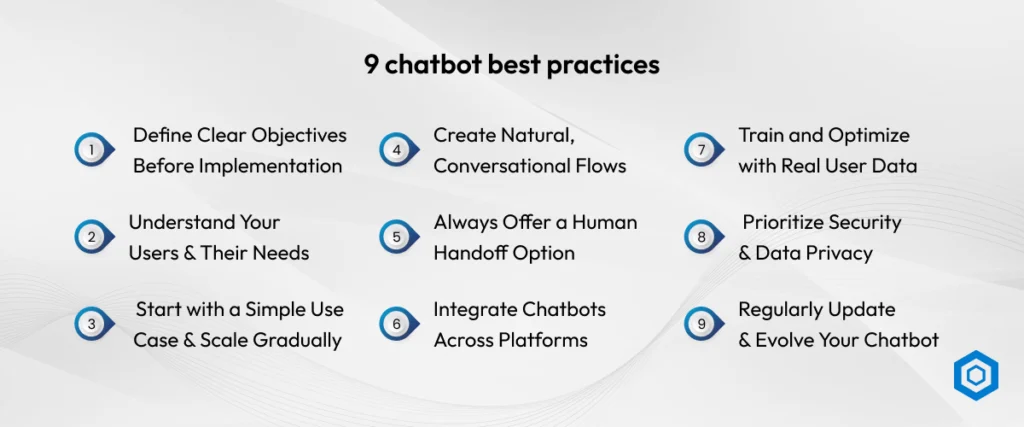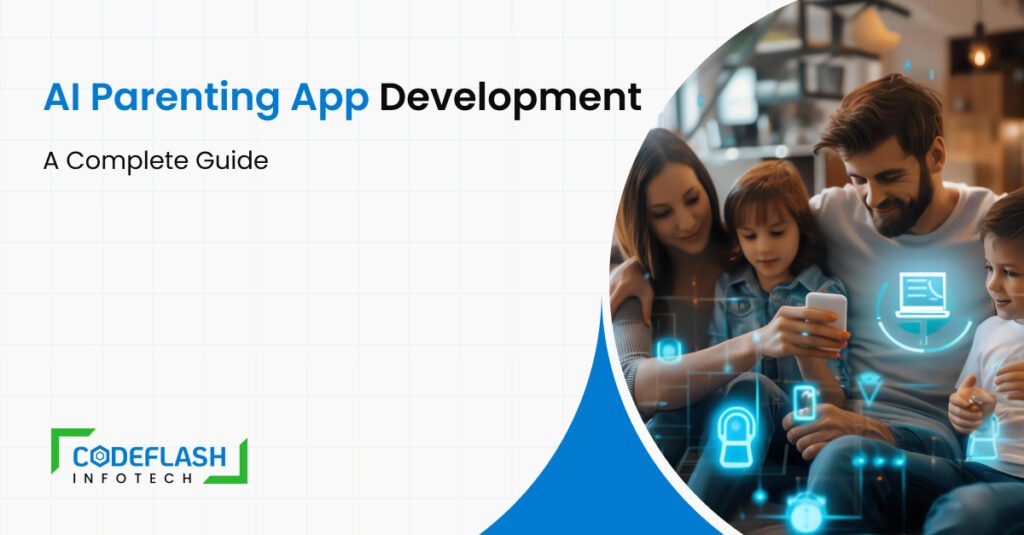
9 Chatbot Best Practices Every Business Should Know
22 JULY
Chatbots are no longer gimmicks when in the modern digital-first world, they come in handy. Whether it is in e-commerce or banking, companies across diverse industries are maintaining conversations with customers by utilizing conversational AI in customer service, promotions, and to enhance the efficiency of activities. In 2024, the global AI chatbot market was valued at $15.6 billion, and is projected to reach $46.6 billion by 2029, with a compound annual growth rate (CAGR) of 24.5% according to Zoho SalesIQ.
Nevertheless, effective chatbot implementation does not only mean implementing a tool (which is also not particularly difficult), but also skillfully using the tool. Here are 9 chatbot best practices every business must know to ensure a practical and user-friendly experience.

1. Define Clear Objectives Before Implementation
It is essential to clarify what the chatbot will do before entering the development phase. Whether it’s reducing customer tickets, automating sales queries, gathering analytics, or any other form of feedback, a specific goal is the precondition for successful chatbot implementation. Avoid vague outcomes like “improving customer satisfaction” and instead focus on measurable targets such as reducing response time by 30% or automating 60% of FAQs.
Want to Enhance User Experience with a Chatbot? Explore our portfolio
2. Understand Your Users and Their Needs
An effective chatbot should be user-focused. Learn about your target person’s behavior, the frequently asked questions, and their communication preferences. As an example, a Gen Z user who will respond to casual and emoji-laden language may also require professionalism in a B2B customer. Tuning your chatbot’s interaction style to match the audience will increase engagement and enable you to enhance the user experience with chatbot systems.
3. Start with a Simple Use Case and Scale Gradually
One of the best chatbot best practices is to start small. It is not necessary to complicate things right from the start. Start with the simplest example, such as responding to frequently asked questions or making appointments, and gradually expand its functional range. This is a gradual method to help you identify bugs early, assess success, and implement necessary changes without overloading your system or users.
4. Create Natural, Conversational Flows
At the heart of conversational AI practices is the ability to mimic human-like interaction. The user should feel that they are having a conversation with a well-informed assistant, not following a decision tree. Write in human terms, make communications concise, and establish the conversational flow that makes simulated conversations effective. This is used to minimize user friction and increase satisfaction.
Do you have questions or need expert guidance on chatbot strategy? Email us
5. Always Offer a Human Handoff Option
Whatever intelligent your chatbot is, it would be sensible to be aware of its shortcomings. Users should be provided with the opportunity to speak with a human agent in the event of more complex issues. The seamless transition from chatbot to human support ensures that users will not become stuck in a loop that could lead to a decrease in trust and a poor overall experience. The practice is also likely to leave fewer opportunities for potential customers to be lost due to unattended queries.
6. Integrate Chatbots Across Platforms
Modern users interact across multiple channels — websites, social media, mobile apps, and messaging platforms. To use chatbots effectively, integrate them across all major touchpoints. Your customer can be on Facebook Messenger, your website, or WhatsApp, but ensure they can receive consistent and seamless support through your chatbot.
7. Train and Optimize with Real User Data
A chatbot can be as brilliant as the information on which it is trained. Follow up on how users are using it, where they are dropping off, and optimize your conversational flows. Always improve by utilizing real-time analytics, A/B testing, and sentiment analysis. It is the initial approach toward perfecting your conversational AI practices and maintaining them relevant to the development of user expectations.
8. Prioritize Security and Data Privacy
Customer retention is all about trust. The data protection requirements, such as the GDPR or CCPA, should not apply to your chatbot. Do not gather personal data that is not necessary. Utilize a secure API and clearly outline how data on app users is stored and utilized.
9. Regularly Update and Evolve Your Chatbot
Chatbots should not be “set and forget” tools. Your chatbot needs to grow with your business, not the other way around. Check performance data, introduce new interaction paths, and review answers regularly to ensure optimal results. Stay up-to-date with the latest chatbot best practices to maintain a competitive edge and continually enhance the user experience with chatbot technologies.
Conclusion
Chatbots have the potential to become robust tools for streamlining operations, reducing costs, and enhancing customer satisfaction when applied effectively. Understanding how to use chatbots effectively is key to unlocking these benefits. These best practices can help businesses achieve the full potential of conversational AI while establishing trust and delivering lasting value to users.
Need Help with Chatbot Implementation? Contact us today!

Frequently Asked Questions
A critical best practice is to start with a clear, well-defined focus. Avoid overwhelming the chatbot with too many features at first; instead, concentrate on ensuring it effectively addresses one core problem before considering any additional capabilities.
Measure such things as response time, user satisfaction ratings, and the proportion of queries answered without a human coming into the equation. Apply analytics to find areas for development.
No, chatbots are suitable only for repetitive tasks and frequently asked questions. In cases of complexity, emotional matters, or non-routine matters, the human agents cannot be replaced. The hybrid model gives an optimal customer experience.
The leading businesses with the potential to make the most out of the use of chatbots are retail, healthcare, travel, finance, and education, where a 24-hour customer interaction is vital.
Table of Content
Define Clear Objectives Before Implementation
Understand Your Users and Their Needs
Start with a Simple Use Case and Scale Gradually
Create Natural, Conversational Flows
Always Offer a Human Handoff Option
Integrate Chatbots Across Platforms
Train and Optimize with Real User Data
Prioritize Security and Data Privacy




